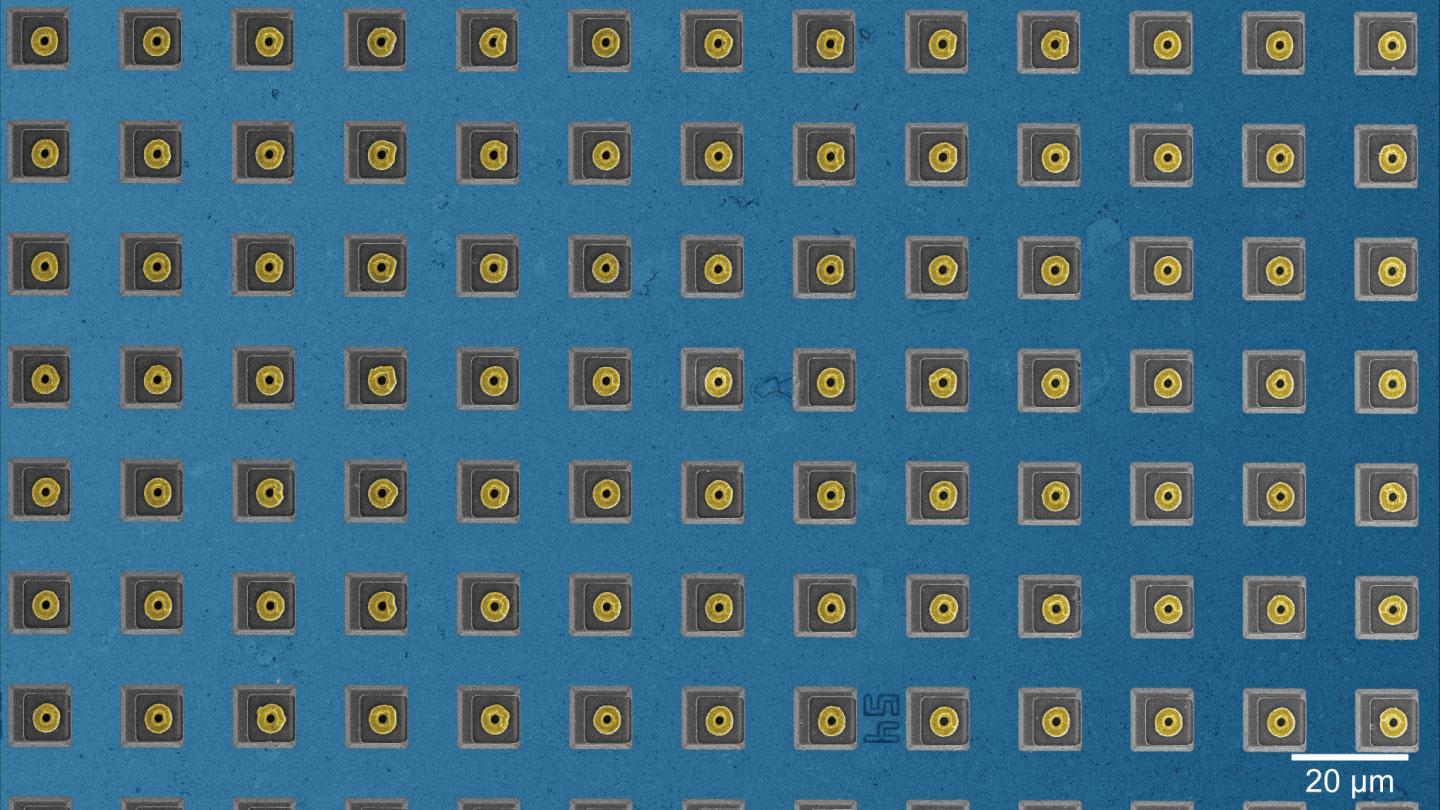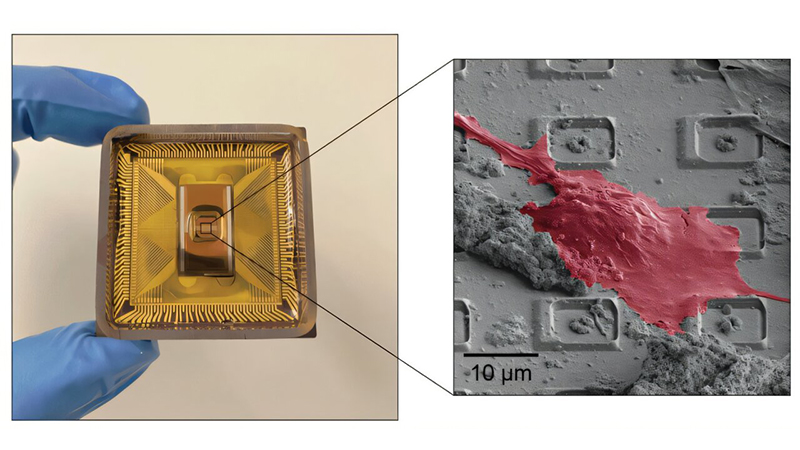Harvard team built a CMOS chip to map 70,000 synaptic connections between 2,000 rat neurons
Research aims to understand large-scale neural networks via a leap in neuronal recording.

Harvard researchers built a complementary metal-oxide semiconductor (CMOS) chip packed with 4,096 microhole electrode arrays, allowing them to record electrical activity across several neural cells. According to the Nature journal, this enabled the team to plot 2,000 rat neurons and map over 70,000 connections between them, with the chip able to measure the signal strength between each connection and characterize the signal type being sent across them.
This is a massive advancement in neuronal research, where scientists can accurately map every detail of neural connections within the brain. At the moment, electron microscopy can visualize these synaptic connections, but it cannot measure and record the signals going across them. Another technique — patch-clamp electrode — allows researchers to accurately record even the faintest of neural signals. However, this technique only measures across a handful of cells, limiting its effectiveness in studying large numbers of neurons.
The new CMOS chip allows researchers to study how a relatively large number of neurons interact, allowing them to understand how their activity results in complex mental processes, like thinking and learning. The researchers said that each microhole is like a patch-clamp electrode; so, by adding over 4,000 of these arrays inside a single chip, they were able to effectively monitor thousands of neurons.
“Not only do microhole electrodes better couple to the interiors of neurons than the vertical nanoneedle electrodes,” Researcher Jun Wang said, referring to the old technique developed in 2020 which the team based their research on, “but they there are also much easier to fabricate. This accessibility is another important feature of our work.”
The team was able to successfully monitor over 3,600 rat neurons using the 4,096 microholes — a nearly 90% success rate. From this, the team was able to record over 70,000 connections, which is over 200 times more than their previous record of 300. Despite all these advances, they’re still a long way from mapping the human brain, with an average of 86 billion neurons. Assuming each neuron has an average of 35 connections, that means our minds have at least 3,010,000,000 synapse connections.
Even with just 2,000 neural cells, this is already a huge quantity of information. “One of the biggest challenges, after we succeeded in the massively parallel intracellular recording, was how to analyze the overwhelming amount of data,” said researcher Donhee Ham. “We have since come a long way to gain insight into synaptic connections from them. We are now working toward a newer design that can be deployed in a live brain.”
If the team is successful in doing this and mapping how each neural connection works in a live brain, it can be used for several technological advancements. For example, it can be applied to AI training and even for building more efficient AI chips, allowing us to get massive computational power without requiring gigawatts of electricity. It can also be used for mental health research, as scientists could understand how synapse connections fire (or misfire) and see how it affects what the mind perceives.
Get Tom's Hardware's best news and in-depth reviews, straight to your inbox.

Jowi Morales is a tech enthusiast with years of experience working in the industry. He’s been writing with several tech publications since 2021, where he’s been interested in tech hardware and consumer electronics.
-
zintoki I think you miss some zeroes. If human brain has 86 milliard neurons we can't have 3.01 milliard synapses.Reply -
edzieba Since this utilises the same mechanism a patch0clamps to record Action Potentials, it has the same drawback oaf accelerating apoptosis.Reply
Perfect for In Vitro studies, no good for implantable BCIs or production scale replacements for ANN silicon.
